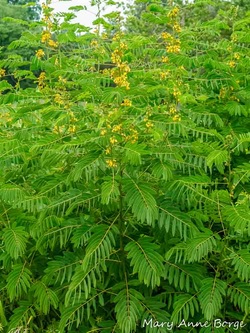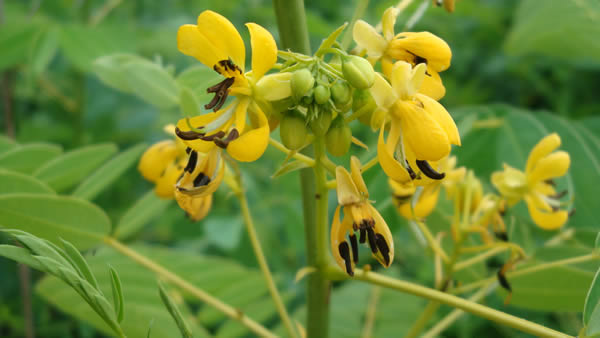More info: |
WilD Senna
Botanical Name: Senna herbecarpa
Plant Family: Legume/Pea (Leguminosae) Description: Wild Senna or American Senna is a long lived herbaceous perennial in the pea family. Featuring a shrubby habit with compound leaves, Wild Senna produces racemes of bright yellow flowers July - August that give way to dark brown seed heads. Though underutilized in most landscapes, Wild Senna provides a broad array of environmental benefits. As a member of the pea family, Wild Senna helps fertilize soil by producing nitrogen rich compounds. The flowers are of special benefit to native bees, while extra-floral nectaries support ants and lady bugs. The seedheads are enjoyed by birds, including game fowl such as quail and wild turkeys. Native Americans used the foliage and seeds as a medicinal laxative, the plant is still used for this purpose today. The plant is also a host for several butterflies of the sulphur family. Growing Conditions: Wild senna should be grown in soil that has good drainage in either a sunny or partly shaded location. This plant grows naturally in damp, fertile soils but will be taller and more "leggy". In a drier soil the plant will grow to about 3 feet and tend to be more dense and shrub-like. Bloom Time:July - August Bloom Color: Yellow Benefit to pollinators/wildlife: Special value to native bees, seeds enjoyed by birds. Host for several species of sulphur butterflies. Native Status: Widely distributed in the eastern U.S. from Ontario, Canada south to Georgia. In the Northeast U.S. wild senna is state listed as threatened or endangered due primarily to habitat loss. The Pennsylvania Biological Survey considers wild senna to be endangered. Location in habitat: Pollinator Demonstration Garden, widely distributed throughout habitat |


